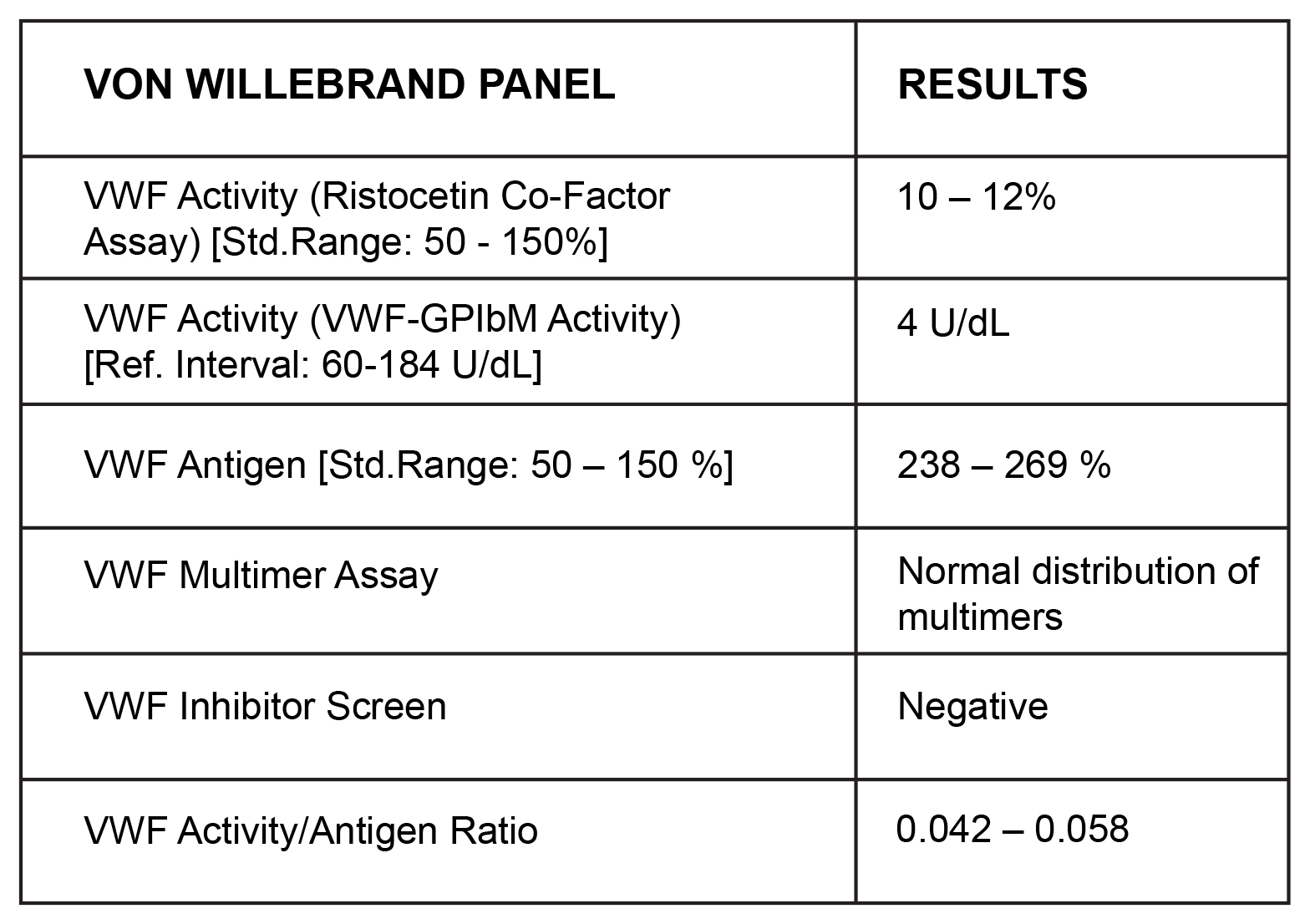Factor XIII deficiency is classified under rare bleeding disorders and is in fact, the rarest with an incidence of 1 in 2 to 3 million births and is inherited in an autosomal recessive manner. On the other hand, Von Willebrand Disease (VWD) is the most common bleeding disorder occurring in about 1% of the US population. Type 2M Von Willebrand Disease (Type 2M VWD), a subtype of Type 2 VWD, has an autosomal dominant pattern of inheritance and is characterized by decreased activity of Von Willebrand Factor (VWF) and its failure to interact with platelets. This report describes an interesting case of an individual with a combined severe congenital factor XIII deficiency and a recently diagnosed Type 2M VWD.
A 43 year old male diagnosed with severe congenital factor XIII deficiency at birth following umbilical stump bleeding has been on regular prophylaxis since 2007. Frequent breakthrough bleeds despite receiving prophylactic infusions of Factor XIII concentrate prompted a re-evaluation of the patient’s coagulation profile. Clinical laboratory parameters consistent with a diagnosis of Type 2M VWD were observed in addition to his underlying severe Factor XIII deficiency. DNA sequencing identified a novel missense variant p.Arg1136Trp (c.3406C>T) as the possible causative mutation.

Weekly blood draws overlapping 3 cycles of prophylactic infusions of Tretten (recombinant FXIII-A subunit concentrate) revealed peak and trough factor XIII activity levels of ~80% and ~10% respectively. The subject had a largely sedentary life style over this period of 12 weeks indicating, based on previous experience, that any moderate to vigorous physical activity could necessitate maintenance of a higher trough level. Additionally, the potential utility of VWF concentrates to effectively manage the second hemostatic defect and prevent breakthrough bleeds needs to be explored.
To our knowledge, this is the first report describing a unique combination of severe congenital factor XIII deficiency and type 2M VWD.

